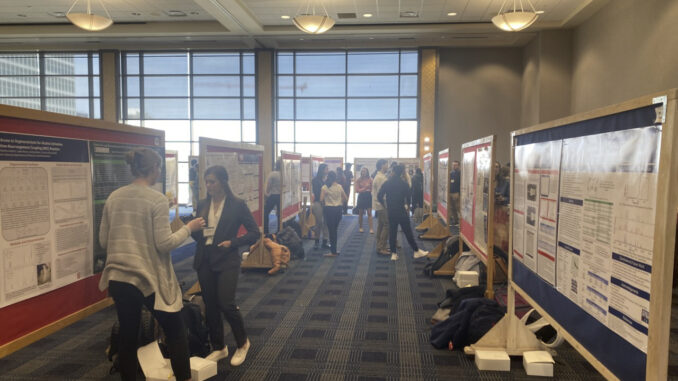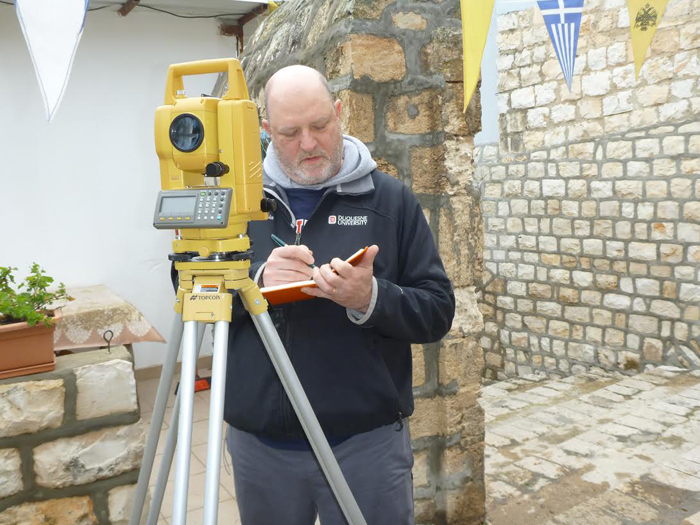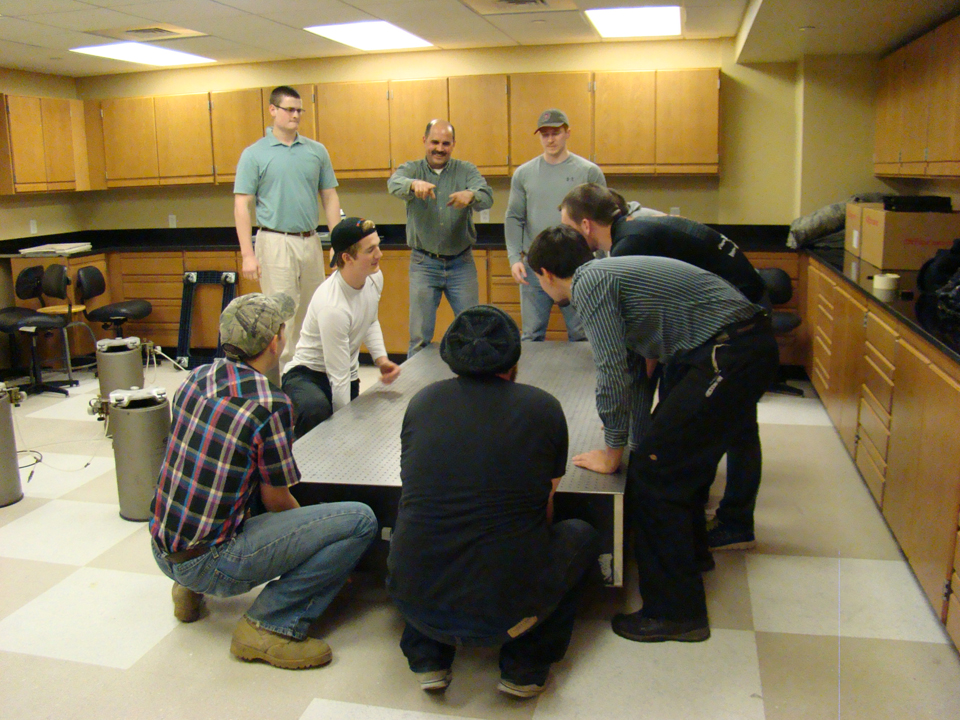
by Zachary Petroff | staff writer
April 21, 2022
After two years of being virtual, the Charles Dougherty Ballroom was filled with 145 projects from undergraduate students sharing their research and scholarship on Wednesday, April 20.
Students representing all schools at Duquesne University were present at the 14th annual Undergraduate Research and Scholarship Symposium (URSS) hosted by the Office of Research and Innovation.
The event filled the ballroom with a wide range of topics from “A Computational Study of the Behavior of a Model Squaramide Catalyst System” to “Anxiety Levels in Relation to Climate Change in Undergraduates.” The sporadic placment of the poster was intentional to encourage cross disciplinary collaboration.
According to Mary McConnell, Associate Director of Student Research and Grants Officer in the Office of Research and Innovations, this year during the hybrid event, students and faculty can see all of the posters with accompanying videos of the students explaining their projects.
“[The videos] will be featured Monday through Friday of this week, but honestly, it will become an archive and then students can reference this for a long time and be able to show family, friend, or prospective employers,” McConnell said.
The event was open to the public at 8:30 a.m. where spectators could engage with students, giving the presenters presentation experience as well as working on their “elevator pitch.” Throughout the day, 12 oral presentations were selected by a peer selection committee from the honors college. The oral presentations were 15 minutes long and covered a diverse set of topics.
“We do try to encourage them to select from a variety of disciplines because we don’t just have one discipline represented in our organizations, thus the peer selection committee,” McConnell said.
The variety of presentations centered around the university, Pittsburgh and current social events.
Avishek Acharya, an undergrad history major, presented the destruction of the lower Hill District in the late ’60s. His research highlighted the displacement of over 8000 mostly Black residents.
“I grew up in Pittsburgh and I wanted to look more into the Pittsburgh Renaissance because the way it’s usually taught is that the administration came in and things got clean. All the smog got taken out, but I think what we don’t talk about is this project, especially the lower Hill District that was paved over for the Civic Arena,” Acharya said. “Later that was condemned and it got turned into a parking lot. So, as it sits, it’s currently just parking lots and all those parking lots used to house more than 8000 people.”
Acharay’s research is relevant as the Penguins ownership was recently sold to the Fenway Group, leaving the development of the former lower Hill District area to the new owners. Acharay hopes that history doesn’t repeat itself and the new ownership consults the community.
Fifth year pharmacy student Duncin Dobbins blended his presentation with his love of art and passion for his research. His topic “Engineering Extracellular Vesicles with an Enriched Mitochondrial Load” sought to determine if the innate EV mitochondrial load can be used improve the health of stroke patients.
“We’ve shown that you can use the natural innate micro vesicles to deliver mitochondria in the context of a stroke. Strokes are one of the leading causes of death and long term disability globally and the only thing that they have to fix it right now is a thing called TPA,” Dobbins said. “TPA is severely underused because you can only administer it within three hours. The estimate is that less than 3% of people that have a stroke are able to use TPA in time. All TPA does is dissolve the clot and restore the blood flow. It does nothing to protect the blood or restore the blood brain barrier.”
The complex presentation was not only aided by the poster, but was accompanied by a video created by Dobbins where he illustrated the process of his work with drawings he created in order to help people understand his research. Additionally, Dobbins is participating in the creative video competition.
“I think this is kind of perfect for being a medical science liaison because you act as the translator between some of science. You’re directly next to the research you have to translate it to the people that aren’t science people, such as the business side of things, and being able to do this video will help. I was able to blend both of my passions,” Dobbins said.
Participants in this year’s URSS are eligible to win a monetary reward from a number of various donors. Winners will be announced early next week.




